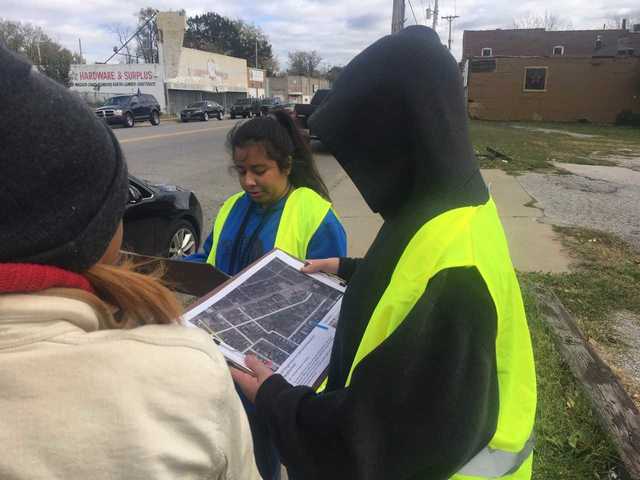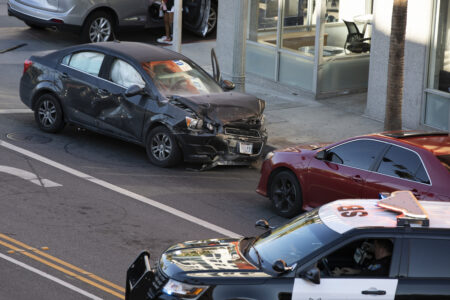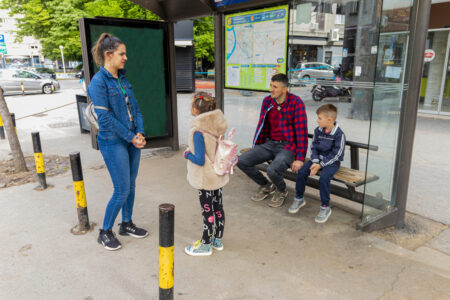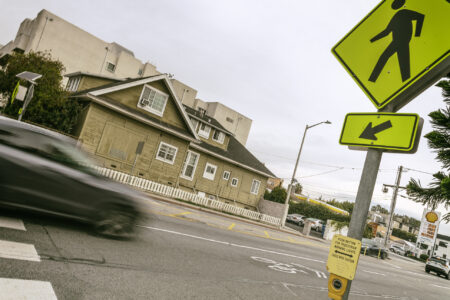
Share On Social!
Eighth-grade students in Kansas City, Kan. (29.3% Latino), are conducting neighborhood audits around their middle school to see how friendly the area is for kids and families to walk.
Latino kids often lack safe places to walk and play. They are less physically active than their peers and face higher rates of obesity and chronic disease. Safer routes would enable families to choose walking, thus improving children’s their physical activity and health, research shows.
Why Walking Audits?
 Walking audits are one way to assess factors that help or hinder safe routes for children to walk.
Walking audits are one way to assess factors that help or hinder safe routes for children to walk.
Audits typically focus on a specific site, like a school or park, or a specific street or corridor. Audits account for things like sidewalk width and condition, street lighting, distance between crosswalks, traffic volume and speed, street trees, and presence of dogs or trash.
You can invite important decision makers, like the mayor, city council, school board members, city engineers, planning students, and the media on these audits.
After the audit, participants summarize their findings and prioritize issues.
Then, they take their solutions to city leaders and important decision makers to discuss solutions.
Kansas’ Eye-Opening Walking Audits
Students at Northwest Middle School in Kansas City recently conducted a neighborhood audit around their school.
The audit was created by University of Kansas students in the School of Architecture, Design and Planning, in partnership with the Historic-Northeast Midtown Association and the Community Health Council of Wyandotte County.
The Historic-Northeast Midtown Association is a Neighborhood Business Revitalization Organization. They care about health and quality of life and believe in empowering residents to affect change in their surrounding environment.
During the audit, students are looking directly at their surrounding environment, at roads, curbs, sidewalks, and streetlights.
Watch a video here.
“I was like wow, I can’t believe there’s so many cracked curbs…so many dangerous curbs,” said eight grader Daniela Mora-Herrera, according to one source. “It could be dangerous to anyone, to the elderly, just dangerous to anyone.”
Once students have summarized their findings, they will present them to the city with the hope to affect change.
“The very cool thing about these kids is they’re leaders and they don’t know it,” said eigth grade teacher Rebekka Brosemer, according to one source. “So let’s give them a chance to become the leaders they should be and that are hidden.”
Can you do a walking audit in your town?
Check out these toolkits, guidebooks, and checklists to help students, parents and planners conduct a walking audit!
Explore More:
Transportation & MobilityBy The Numbers
27
percent
of Latinos rely on public transit (compared to 14% of whites).



